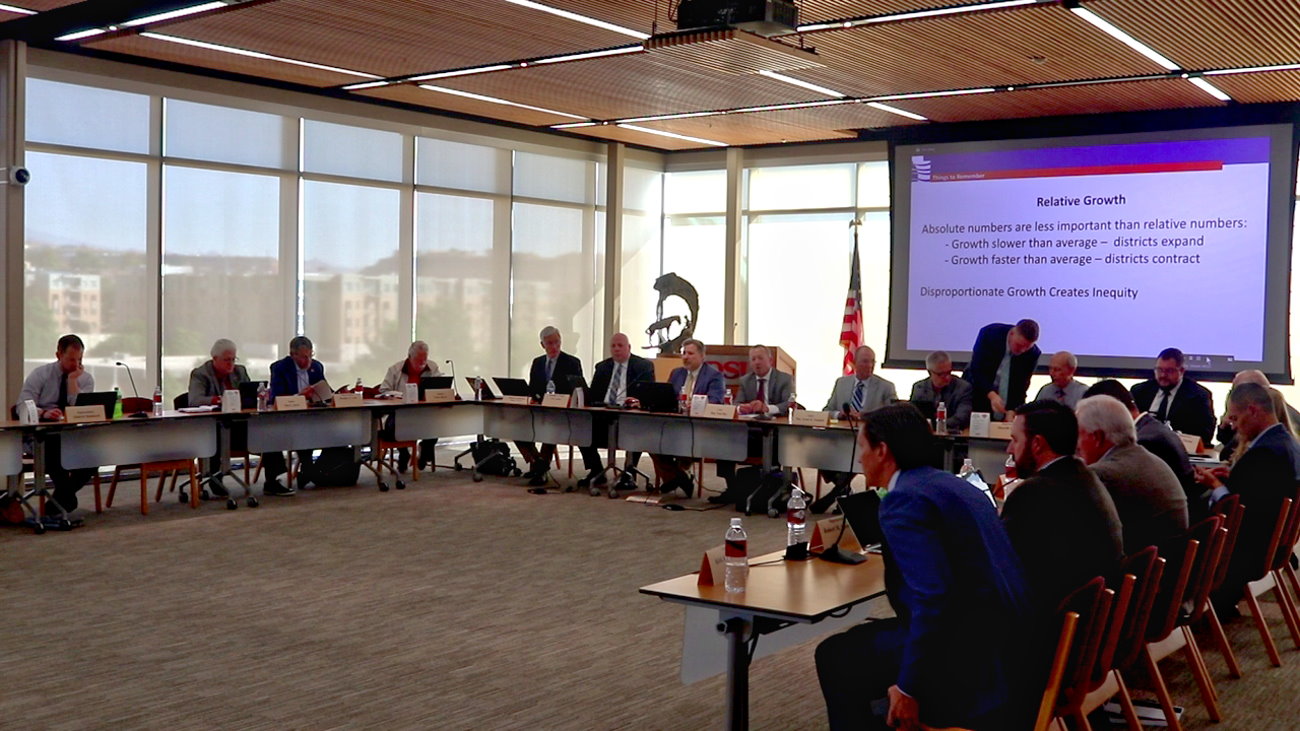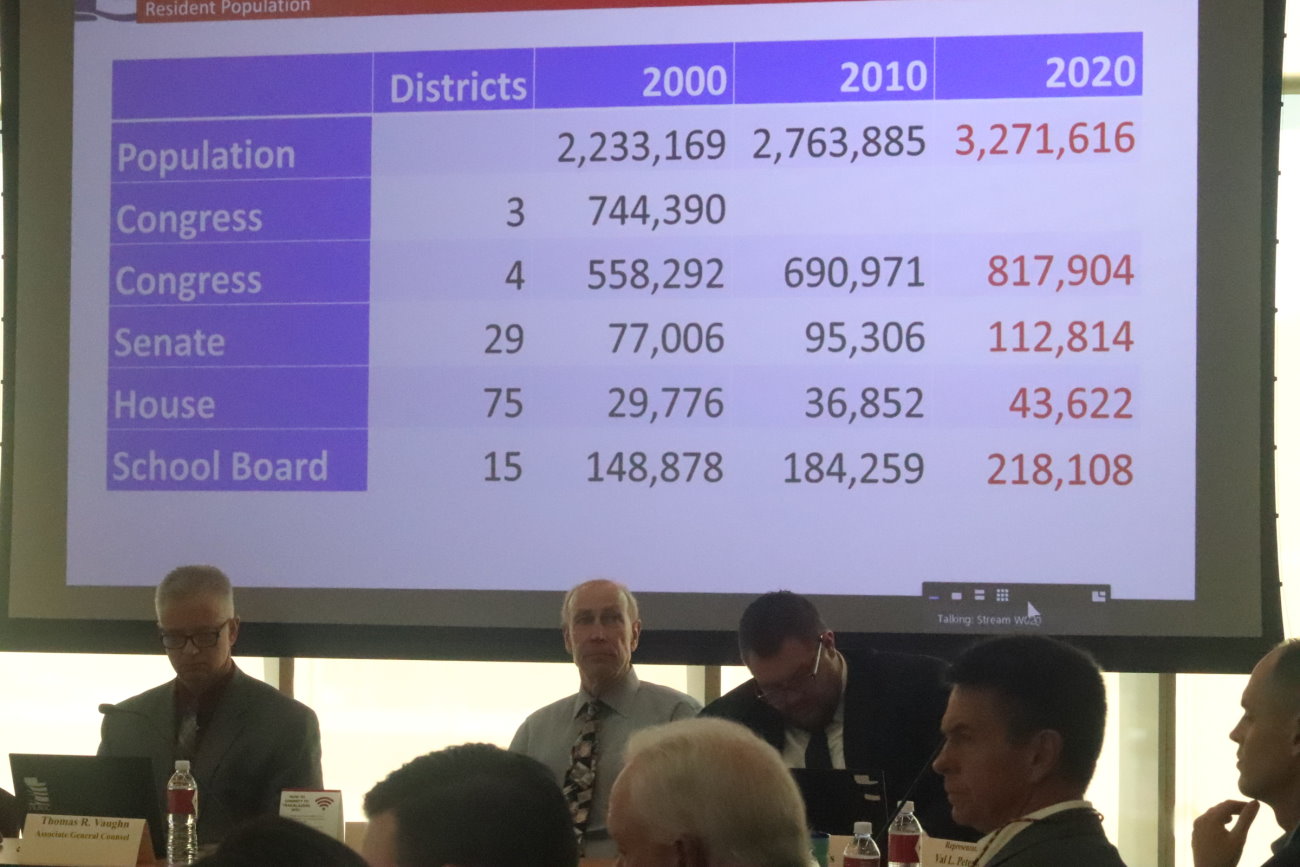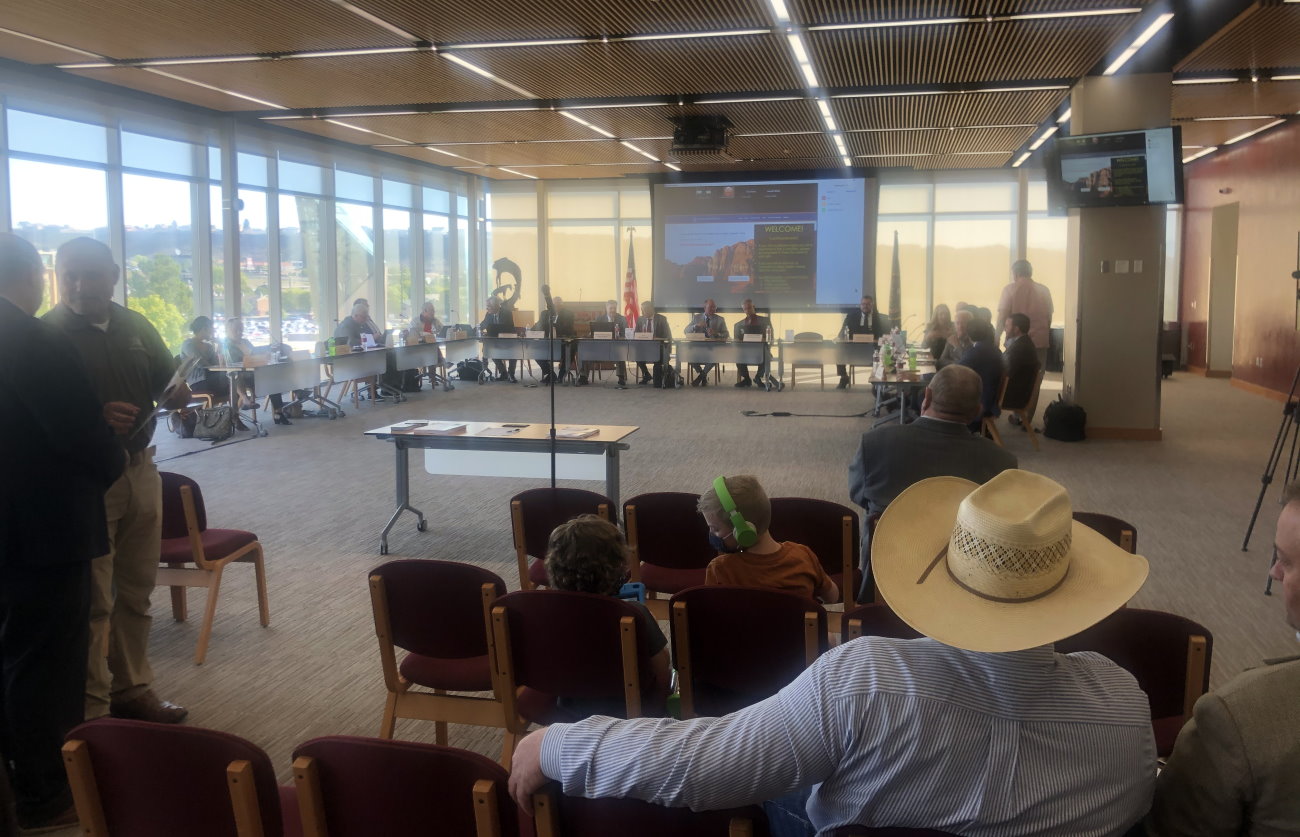ST. GEORGE — Making sure Utah’s rural communities are remembered and represented as the state engages in the process of redrawing its voting districts was a recurring theme during a public hearing held Saturday by the Utah Legislative Redistricting Committee.

“We want to make sure that rural component is heard,” Enterprise Mayor Brandon Humphries told the committee as it met at Dixie State University in St. George that morning. “We kind of get lost in the paper work.”
The legislative committee, which includes multiple state senators and representatives from across Utah – is presently engaged in the once-a-decade process of redistricting that takes place following the release of U.S. Census data. It is a process mandated by state and federal law and involves the redrawing of congressional, legislative and state school board boundaries in an effort to keep the populations within those voting districts as balanced as possible.
As populations within individual districts both grow and decrease over time, shifts in district boundaries can occur. This ultimately impacts who people within a district can vote for and who their representatives are, which can also go on to impact which political parties are in power in Congress and the state Legislature.
“There isn’t a safe seat in the whole of Utah when it comes to redistricting,” committee co-chair Rep. Paul Ray, R-Clearfield, said, noting that seats currently held by elected officials can see their districts expanded, shrunk, or even eliminated based on the population.

Based on the numbers presented at the public hearing, the legislative committee needs to redraw Utah’s four congressional districts to include a population of between 817,086 and 818,722 with a plus or minus deviation of 0.1% The ideal congressional district size is 817,904.
As for state-level districts, the ideal population numbers are as follows:
- 112,814 for State Senate districts.
- 43,622 for State House districts.
- 218,108 for State School Board districts.
State-level districts get a little more leeway on how close the balance between is them – a deviation of plus or minus 5% – while congressional districts are to be as close to the “one person, one vote” standard as possible per federal law.
Washington County’s overall population has grown by over 40,000 people since 2010. This has led to an imbalance in the populations of various state House districts across Iron and Washington counties. This is anticipated to lead to the creation of new House seats representing the southwest corner of the state.
“What happens here is going to ripple throughout Utah,” Ray said.
Though unable to attend the public hearing that morning, St. George Mayor Michele Randall made her thoughts on the redistricting process known in a letter to the committee that was read by Sen. Don Ipson, R-St. George.

Ipson, along with Rep. Brad Last, R-Hurricane, were southwest Utah’s representatives on the legislative committee.
“All four (congressional) districts must include a part of the Wasatch Front and rural areas,” Randall wrote.
Her letter goes on the state that congressional districts could also be drawn along transportation routes, such as Interstate 15 and similar roadways in order to provide Utah’s congressional representatives better ease of access to constituents. New and revised districts must also be drawn up based on regional concerns, she wrote.
Randall also stressed a desire to keep St. George in the same congressional district represented by Republican Rep. Chris Stewart, as he was already familiar with many of the issues facing southwest Utah.
Among these items, which again drew back on rural issues, were how much Washington County deals with the federal government, particularly in relation to public lands. Randall wrote that this is an issue northern Utah doesn’t have to deal with as much, so having someone already familiar with those issues remaining Washington County’s voice in Congress was important.

Washington County Commissioner Adam Snow also expressed a desire to see Washington County remain in Stewart’s congressional district.
Snow’s comments largely mirrored those of Randall’s, and added that Utah’s “rural component” must not be lost, but bolstered as the districts are redrawn.
One Washington County resident who addressed the committee said he felt the redistricting process was being tainted with partisanship and didn’t like it.
“I think redistricting should be nonpartisan,” he said, and pointed to the endorsements of Stewart by two local politicians as an example of “blatant” partisanship being injected into the process.
“There should be no value given to incumbency,” he said. “It’s pretty obvious what’s happening here.”
Another speaker suggested an alternative to how Utah conducts elections, along with a way to prevent potential gerrymandering.

“Many who prefer fair and open elections favor the replacement of single member districts with gerrymander-proof multi-member districts elected by proportional, ranked choice voting methods,” St. George resident Rob Latham said in a prepared statement. “These methods, where tried, have been found to be less polarizing, and more competitive and representative — by allowing voters to “district” ourselves in alignment with like-minded citizens across Utah.”
Latham, who ran for congress against Stewart as a Libertarian in 2020, said this process could have save taxpayer money, while also being far less self-serving than the current process that “protects the increasingly distrusted two-party system.”
Absent at the public hearing in St. George was anyone presenting their own district maps for consideration. The ability for the public to draw up maps can be found on the legislative committee’s website. However, Ray said people can also submit hand-drawn maps to the committee if they don’t want to use the option posted on the website.
Maps submitted to the legislative committee, as well as the Utah Independent Redistricting Commission, will be reviewed by the legislative committee, and if they match the criteria the committee must adhere to under federal and state statute, the map, or elements of it, may be incorporated into the final product that will be voted on by the Legislature and submitted to Gov. Spencer Cox for final approval.

“We would actually like to use a map from the commission or the public just so people can see what we are trying to do,” Ray said. “We’ll select the best maps we can find.”
As for the overarching theme of balancing urban and rural representation within the congressional districts, Sen. Scott Sandall, R-Tremonton, who also co-chairs the committee, said there were two avenues of thought there.
Some people believe that three congressional districts should focus on the 75% of Utah’s population that exist along the Wasatch Front, while the remainder of the state should be a congressional district unto itself, Sandall said. The other line of thinking matches what Randall and Snow have recommended – creating as much of a balance as possible with the district between those living in urban and rural Utah.
As well, many people do not realize the ways by which the urbanized Wasatch Front and rural Utah are connected., he said.
“Rural Utah and Urban Utah are integrated in so many ways that you may not understand or think about,” Sandall said.
Though the Legislative Redistricting Committee will not be returning to St. George, Utahns can still participate in the remaining public hearing online, Ray said. This can be accomplished by following links to upcoming meetings posted on the committee’s website. Recordings of previous hearings are also hosted there.
Copyright St. George News, SaintGeorgeUtah.com LLC, 2021, all rights reserved.